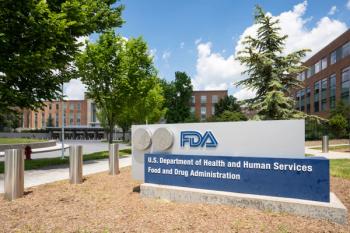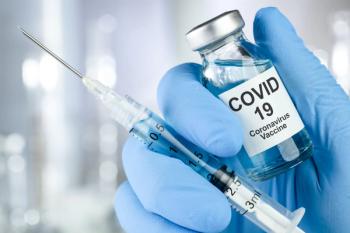
SGLT2 Inhibitors Show Protective Effect on Kidneys
Key Takeaways
- SGLT2 inhibitors combat inflammation and slow kidney disease by elevating S-adenosylmethionine (SAM) levels, which suppress inflammatory gene activity through epigenetic modification.
- The benefits of SGLT2 inhibitors extend beyond glucose control, offering kidney protection and reduced cardiovascular risk, even in non-diabetic patients.
The class of diabetes drug has a protective effect on the kidneys for reasons beyond glucose control.
A new report may help explain why inhibition of sodium glucose cotransporter 2 (SGLT2) fights inflammation and slows
The report, which was
An estimated
SGLT2 inhibitors were designed to help slow disease progression in patients with type 2 diabetes by improving glucose control. The class of drug has been shown to not only benefit the kidneys but also to
Yet, Maekawa and colleagues said there is emerging evidence suggesting that SGLT2 inhibitors do more than help control glucose. They noted that multiple clinical trials have shown that SGLT2 inhibitors can benefit patients with chronic kidney disease even if they do not have diabetes.
In a press release about the new study, Maekawa said the wide-ranging efficacy of SGLT2 inhibitors raised important questions about the broader effects of SGLT2 inhibition.
“We already know that SGLT2 inhibitors slow kidney damage in people with diabetes and kidney diseases,” Maekawa said. “But no one really understood why blocking a single transporter in the kidney had such a large protective effect.”
The investigators hypothesized that altered renal metabolites might be the link connecting SGLT2 inhibition and kidney protection. They decided to study the question in mice on a high-fat, diabetogenic diet. They found that mice who lacked SGLT2 function had elevated levels of S-adenosylmethionine (SAM) in their kidneys, compared to wild-type mice who were fed the same high-fat diet. Those elevated levels of SAM, in turn, were associated with improved kidney function and decreased expression of genes related to the nuclear factor kappa-light-chain-enhancer of activated B cells (NF-κB) inflammatory pathway, which the authors said is a known driver of kidney damage.
The authors also noted that in the wild-type mice, the high-fat diet appeared to be associated with injured proximal tubular cells. In both mice and humans, injured proximal tubular cells are associated with a reduced expression of the enzyme MAT2A, which produces SAM.
Maekawa and colleagues next tried inhibiting MAT2A in mice with SGLT2 deficiencies and found that doing so resulted in a loss of kidney protection, thus supporting the hypothesis that SAM plays a key role in protecting the kidneys.
“This molecule acts as a switch, turning down inflammation by changing the way genes are read through a process called epigenetic modification,” Maekawa said in the press release. “The benefit of SGLT2 inhibition isn’t just about sugar control; it’s also about rewriting the metabolism to keep inflammation in check.”
The investigators further found that the presence of SAM results in increased trimethylation of histone H3 lysine 27 (H3K27) at inflammatory genes. Maekawa said this modification represses gene expression and appears to explain why SGLT2 inhibition protects kidneys from metabolic stress. He said by blocking glucose reabsorption in the kidneys, SGLT2 inhibitors may elevate SAM levels, thereby suppressing inflammatory gene activity.
“Our research shows that SGLT2 inhibition rewires the kidney metabolism and gene activity, uncovering a new way: the kidney defense itself,” Maekawa said. “This raises the possibility of some exciting new therapeutic avenues that will inspire us to keep investigating.”
References
- Maekawa H, Zhou Y, Aoi Y, et al. SGLT2 inhibition protects kidney function by SAM-dependent epigenetic repression of inflammatory genes under metabolic stress. J Clin Invest. 2025;135(19):e188933. doi:10.1172/JCI188933
- Alicic RZ, Rooney MT, Tuttle KR. Diabetic kidney disease: challenges, progress, and possibilities. Clin J Am Soc Nephrol. 2017;12(12):2032-2045. doi:10.2215/CJN.11491116
- Cowie MR, Fisher M. SGLT2 inhibitors: mechanisms of cardiovascular benefit beyond glycaemic control. Nat Rev Cardiol. 2020;17(12):761-772. doi:10.1038/s41569-020-0406-8
Newsletter
Stay ahead of policy, cost, and value—subscribe to AJMC for expert insights at the intersection of clinical care and health economics.









































